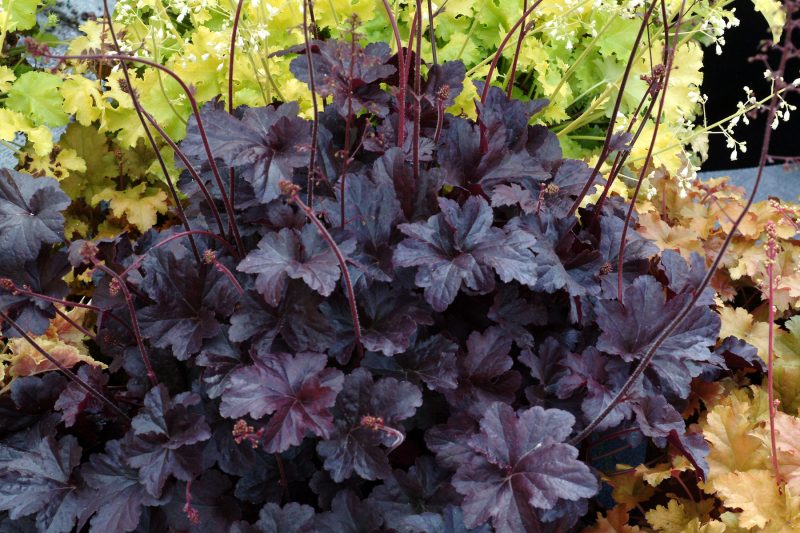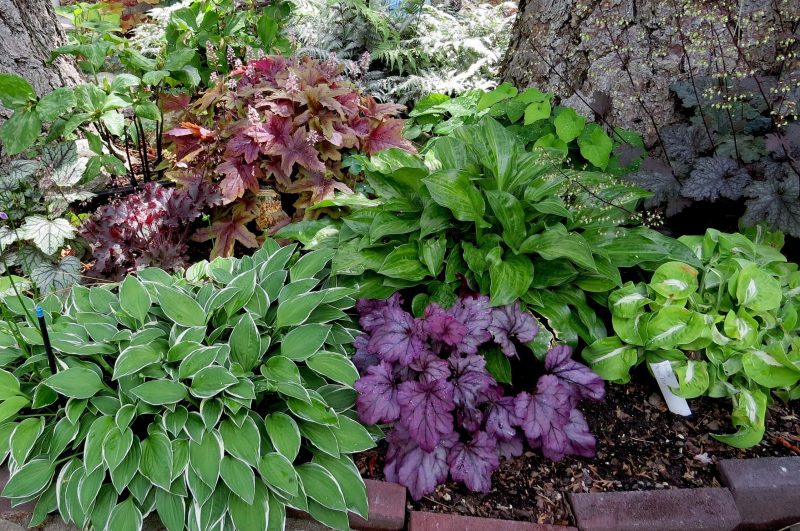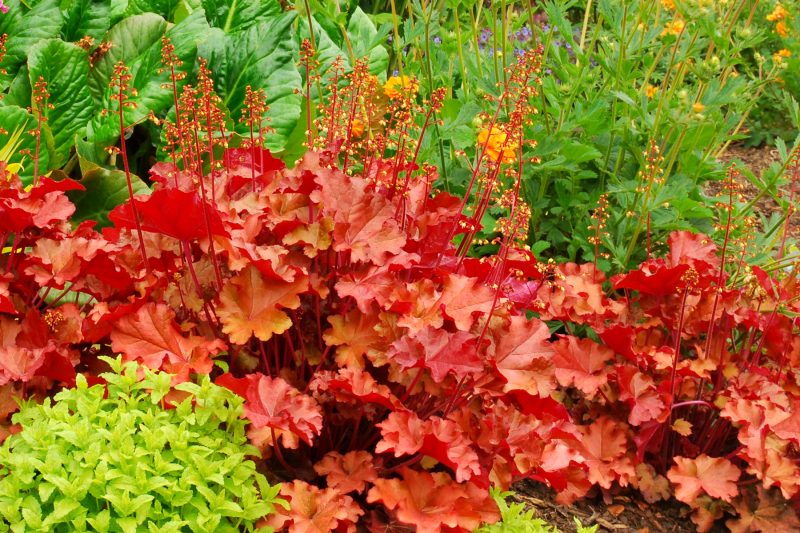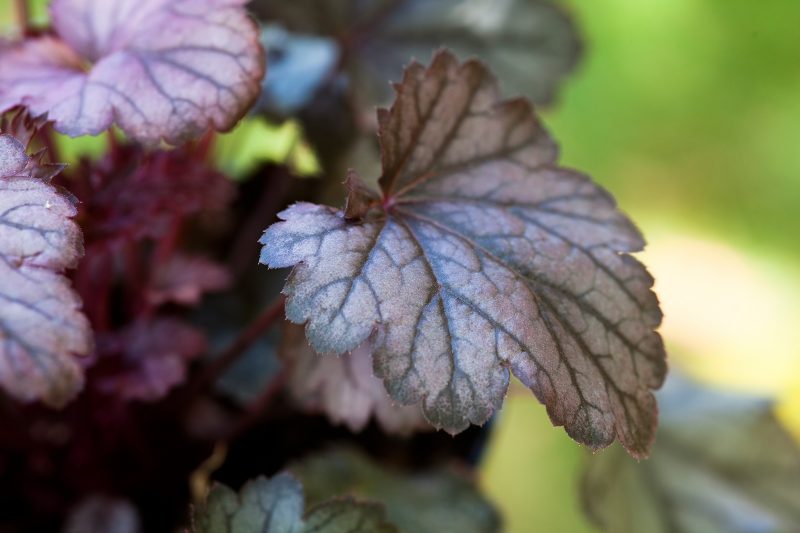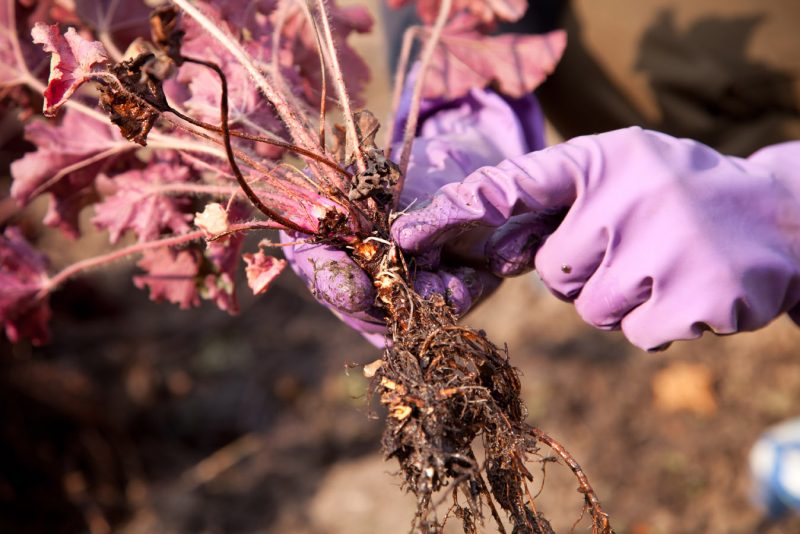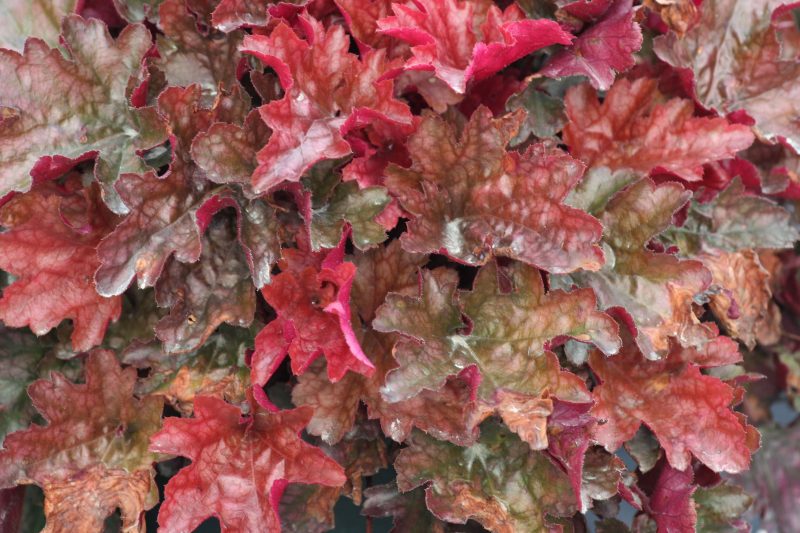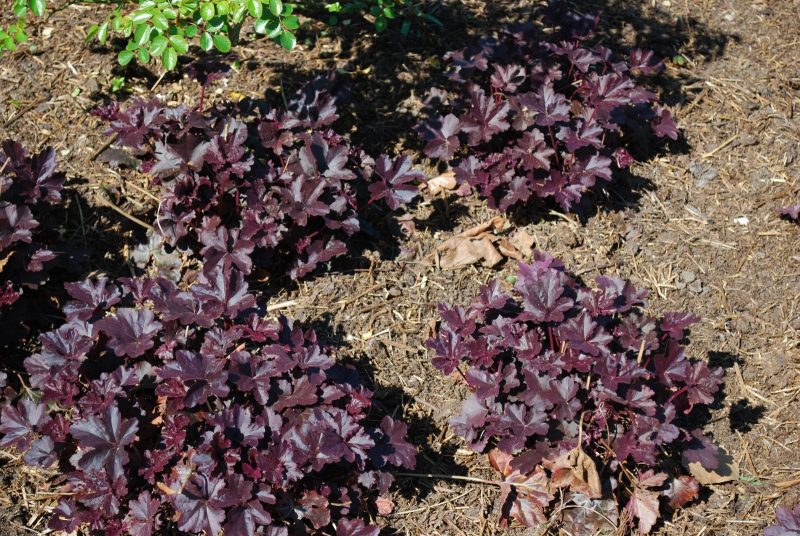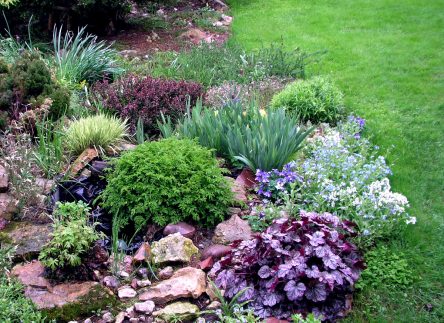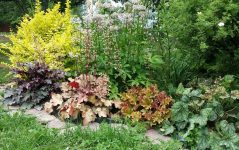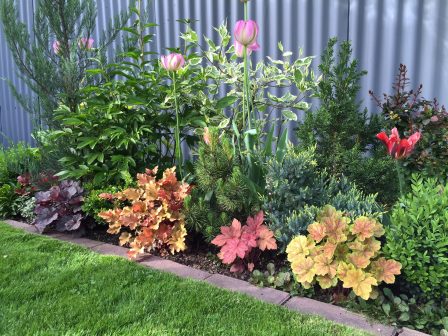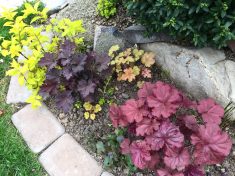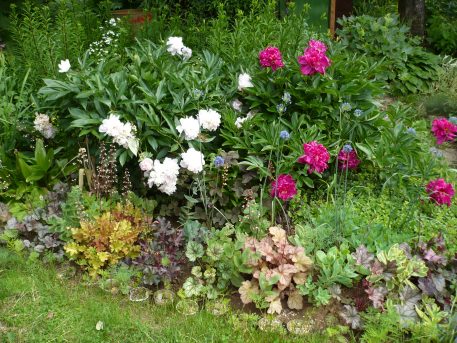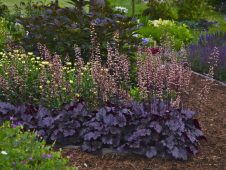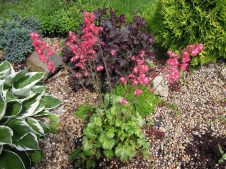Geichera, planting and care in the open ground for which is very simple, a popular plant, often used by landscape designers to design personal plots.
Material Content:
Popular Geicher varieties
Many varieties in the wild grow in rocky terrain on poor soils in North America, and therefore perfectly take root in our gardens in the middle lane.
Divide the types of decorative heichera into 2 groups:
- deciduous;
- blooming.
The plant attracts attention with its leaves, the color scheme of which is very wide. To date, more than 400 varieties have been bred, many of which are grown by our gardeners.
Especially popular are types of cylindrical shape, as well as American and blood red. The latter have very bright, dense foliage. Based on this species, many varieties and hybrids were obtained. Heichera blooms from mid-summer to early fall. The plant is very unpretentious in care. The most popular varieties are Monet and Hercules.
Species Heuchera american has a rounded foliage with a variety of shades and yellow flowers.
Heichera cylindrical has very large leaves. Inflorescences are characterized by a cylindrical shape with saturated coral or red colors.
Velvet leaves are characteristic of Gehera fibrous. Their distinguishing feature of the variety is the large size of a triangular shape.
Outdoor landing
In order for the flower to grow well, you need to choose the right site for it. The plant prefers light soil with a high content of nutrients.You can not plant in lowlands with stagnation of water. Geicher's flower is shade tolerant, but the eastern side of the plot, lit in the morning, will be the best place for it.
The plant is not aggressive and coexists perfectly on one flower bed with other perennials. Especially delightful look flower arrangements from different varieties.
Before planting, the selected area is dug up and river sand or pebbles are introduced. Holes suit the size of the root system. Seedlings are planted in increments of 25 cm.
After planting, it is advisable to mulch the plants and regularly water the first week, but try not to overmoisten the soil too much. Usually, to obtain a seedling from an adult bush, divide the dividend.
Plant nutrition and fertilizer
In the first year after planting, the flower is not fertilized. Then, in the period of active growth, complex compositions are introduced, depending on the variety. Choose mineral mixtures for flowering or decorative deciduous. It is necessary to feed perennials after flowering.
The dose recommended by the fertilizer manufacturer should be reduced by 2 times.
Conditions for normal development and growth
Although the plant can be called unpretentious, for its normal growth it is still necessary to create certain conditions. The flower requires diffuse shade, good drainage and good permeable soil.
Heichera will retain even in the heat its beauty and decorativeness if planted in the shade of a large tree. Only red-leaf varieties require a lot of sun, since in bright light their color becomes more saturated.
The root system of the plant is very close to the surface of the soil, so regular watering is important. In no case should the soil be allowed to dry out, otherwise Geicher will die.
It is advisable to mulch the bushes. A layer of sawdust or tree bark will help maintain moisture near the roots and prevent weed grass from growing.
Flowerbed regularly weed and loosen. It is convenient to carry out these procedures the day after watering.
With age, the bushes lose their decorativeness with age - their middle begins to gradually become bare. In this case, Geicher can be rejuvenated - dig, divide with a shovel into parts and again planted. It is better to carry out such events at the end of summer after flowering or in early spring even before the leaves open. The flower transfers the transplant almost painlessly and immediately begins to grow actively.
An important nuance of care - you can’t remove leaves that dry in autumn, as it helps to winter without loss, covering the roots and keeping warm around them. Only flower stalks should be removed before wintering. Additionally, varieties with light leaves are sheltered in winter. It is quite enough to sprinkle them with bushes of fallen mass.
Read also:open air spirea
Flower propagation methods
The simplest method, which is convenient to combine with a transplant, is the division of an adult bush. The most suitable time for this is early spring or autumn. Heicher is dug up, and then a socket with leaves is separated with a sharp tool. A small bush is planted a little deeper than the mother plant grew.
Another, more time-consuming method of propagation is cuttings. The procedure is carried out in the middle of summer, for which it is necessary to cut branches about 6 cm long, and then root them in a greenhouse. After 3-4 weeks, roots will appear on the cuttings, after which they can be planted in the garden.
Another flower in its infield is sometimes propagated by seeds. In this case, the flower stalks are not cut, but left until the seeds ripen. This technique is very laborious and is used mainly by breeders.
Unfortunately, Geicher, grown in the latter way, does not retain varietal traits, and plants that grow close to wild ones usually grow.
Plant diseases and pests
These grassy plants for open ground, as a rule, rarely get sick. But if you violate the order of departure, then powdery mildew can hit Geicher.Treatment - spraying with special fungicides, such as Topaz and Fundazol.
Due to excessive dampness, the leaves of the plant affect brownish spots. This is how rust manifests itself. Against this ailment, spraying with a solution of Bordeaux liquid is used.
Geichera loves to feast on juicy leaves and slugs. Similar pests settle in highly waterlogged soil. Periodically, parasites are collected manually or set traps.
How to transfer Geicher in the fall to another place?
Usually in the fall, seedlings grown from cuttings are planted. A very important condition for such autumn work is that the soil around young outlets must be mulched with wood ash or bark so that the frosty root system does not damage the root system. In the spring, the protective layer is removed.
If there is a need to transplant an adult bush to another place, then first prepare the site. To do this, dig the earth and make a hole according to the size of the roots. Then the bush, along with a lump, is lowered into a new hole and densely asleep. The soil around the plant is well compacted and shed. Be sure to mulch! Geyhera transplant in autumn is permissible only long before the start of the first frost. In the northern regions, it is better to transplant bushes in the spring.
Read also:Rudbeckia perennial planting and care
Landscaping Ideas
The plant will be the main decoration of any rosary. Wonderful flowers look great in compositions and in single plantings against the background of conifers or lawn.
The main advantage of the perennial is that it does not lose its decorative effect throughout the summer season and is extremely easy to care for. Geicher can even be used as a groundcover, if you need to hide unsightly corners in the garden. Perennial looks very beautiful against the background of conifers, shading their juicy greens with its variegated foliage.
The plant is great for decorating alpine slides and flower borders, and also looks great on the banks of artificial ponds. They are decorated with gazebos and outdoor terraces, garden sculptures and fountains. The flower harmoniously fits into any landscape design.
Growing Geichera, whose varieties delight in its decorativeness, is a very simple process. The unpretentiousness of the plant and its elegant appearance make the plant a welcome inhabitant of any garden.


